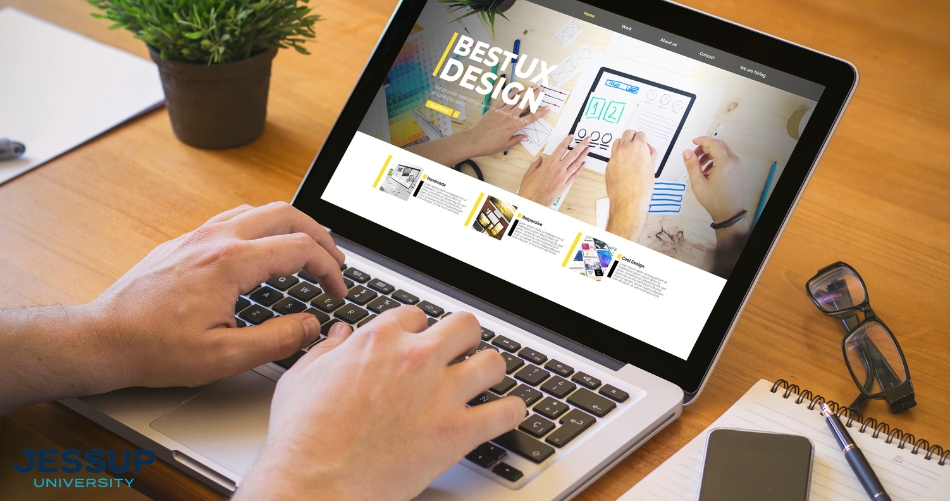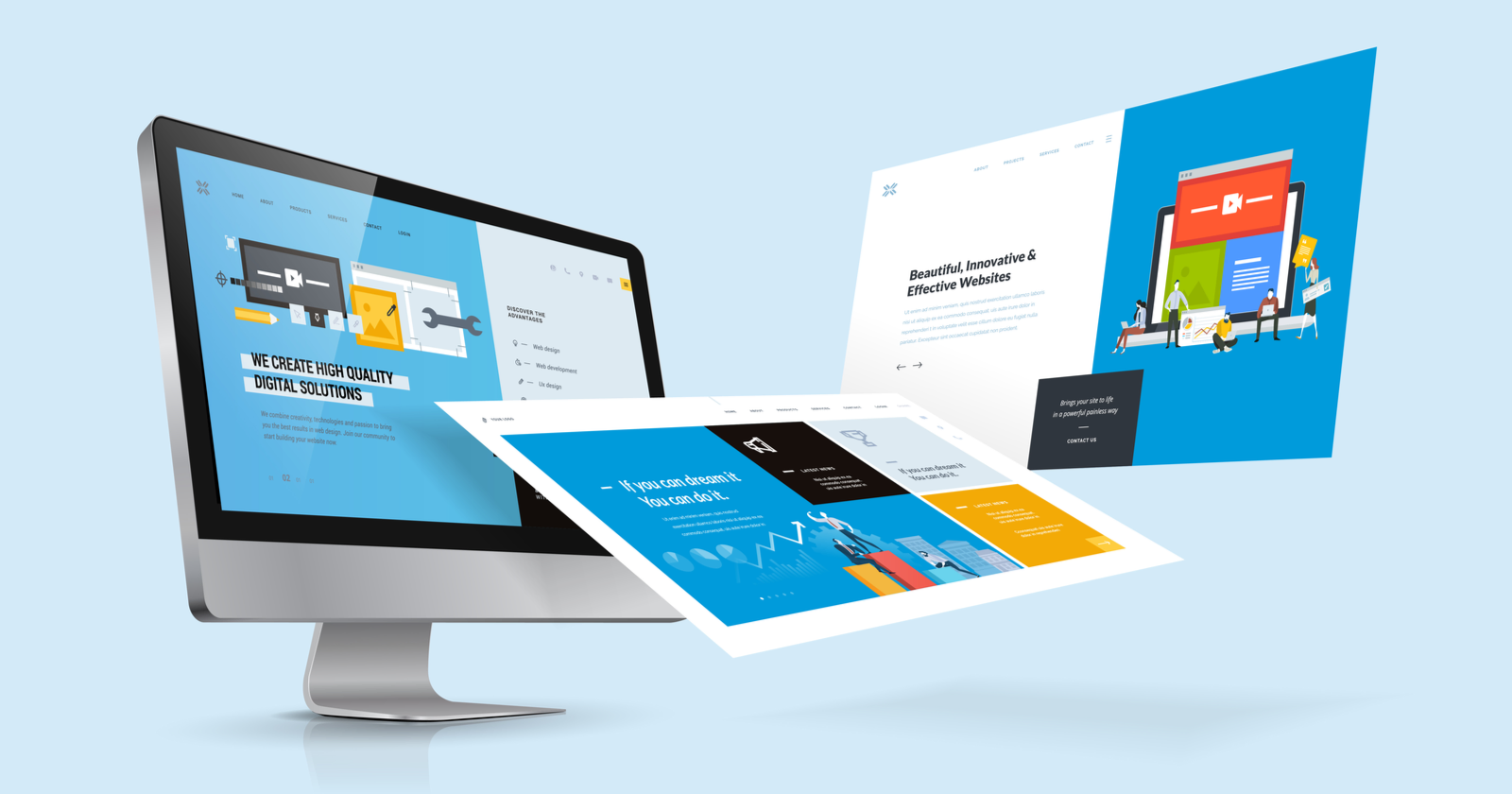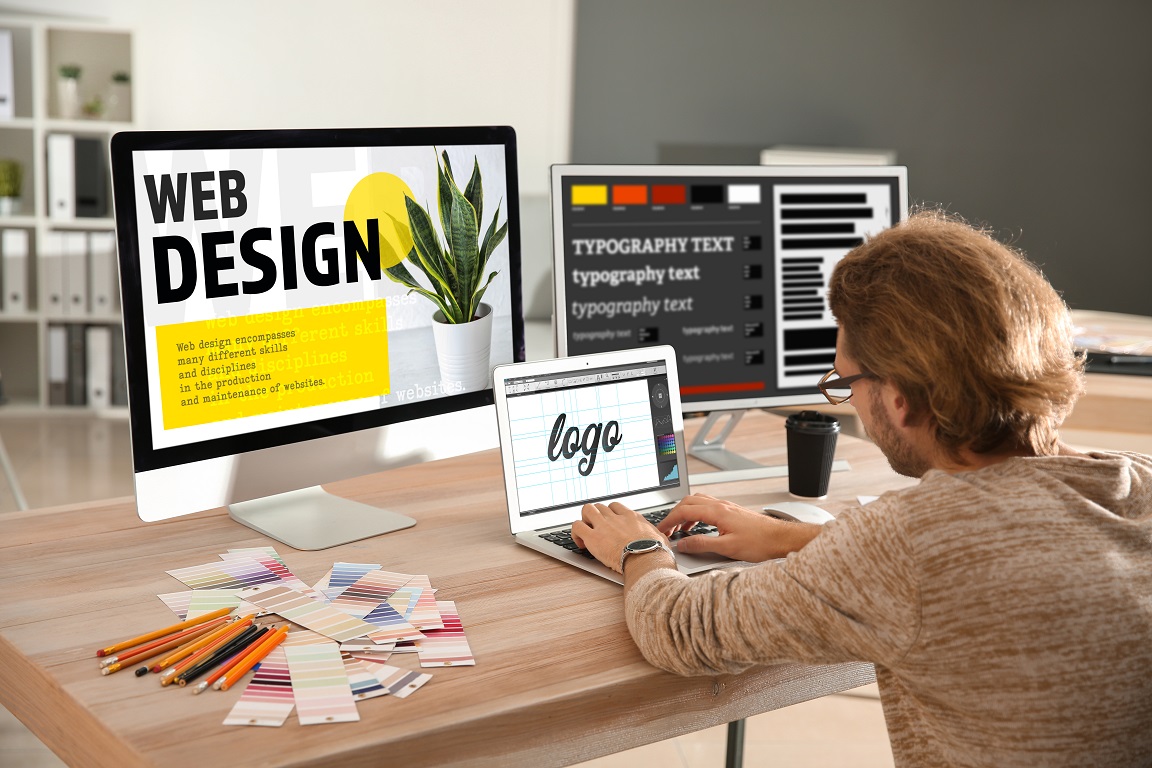Change Your Business with Personalized Website Design Services
Maximize Customer Experience With Innovative Internet Site Style Solutions
In today's electronic landscape, optimizing individual experience with innovative website design options is necessary for organizations seeking to engage their target market effectively. The assimilation of interactive components can additionally elevate the user journey, triggering a reevaluation of conventional style techniques.
Comprehending User-Centric Design

To execute user-centric style properly, it is necessary to perform thorough study, consisting of customer meetings, studies, and use screening. These research techniques give useful information that notifies style choices, guaranteeing that the final product lines up with individual assumptions. In addition, developing user identities can assist designers visualize and empathize with the end-users, assisting the layout process toward a lot more relevant services.
Furthermore, repetitive layout is a key component of user-centric methodologies. By continually testing and refining designs based on user feedback, developers can determine pain points and locations of improvement, causing a more polished end product. Inevitably, user-centric design is not just a phase in the development process however a constant dedication to focusing on user requirements, causing more efficient and interesting electronic experiences.
Importance of Responsive Layouts
As digital communications significantly happen throughout a range of devices, the value of receptive layouts can not be overemphasized. A responsive design makes sure that a site adapts perfectly to different display sizes, from desktop computer monitors to mobile phones. This flexibility is critical in today's multi-device landscape, where users anticipate a interesting and constant experience no matter exactly how they access web content.
The key benefit of responsive style is enhanced customer complete satisfaction. When an internet site is optimized for all tools, it decreases the demand for zooming, scrolling, or straight navigation, which can lead and discourage customers to higher bounce rates. Additionally, internet search engine like Google focus on mobile-friendly web sites in their ranking algorithms, making responsive layouts important for effective search engine optimization strategies.
Moreover, responsive designs assist in simpler maintenance and updates. Rather than taking care of different versions of a website for various tools, a solitary, fluid design can be customized, saving time and resources. This all natural approach not just boosts efficiency but additionally cultivates brand name coherence across systems. Ultimately, purchasing receptive layouts is not just a pattern; it is a basic principle of modern-day web layout that dramatically enhances customer experience and interaction.
Enhancing Navigating and Access
Effective navigating and availability are crucial components of a well-designed internet site, substantially influencing individual engagement and satisfaction. An easy to use navigation structure allows site visitors to discover info quickly and without effort, decreasing disappointment and increasing the possibility of repeat gos to. Executing clear, detailed labels for navigation links, in addition to a sensible hierarchy, can direct users effortlessly through the site.
Access is just as essential, making certain that all individuals, despite their abilities or impairments, can communicate with the website successfully. This can be accomplished through the usage of ideal color contrasts, message dimensions, and alt message for images, which together boost the experience for visually damaged users. Incorporating keyboard navigating and screen reader compatibility increases access for individuals with diverse needs.
Routine usability screening can provide valuable understandings right into navigating efficiency and ease of access concerns. By gathering responses from real individuals, designers can identify discomfort points and make educated modifications. Inevitably, focusing on navigating and access not only cultivates inclusivity yet additionally cultivates a favorable user experience, enhancing the brand name's commitment to quality and individual treatment in a progressively digital landscape.
Making Use Of Visual Power Structure Effectively
Aesthetic pecking order functions as a directing framework in internet site style, guiding individuals' attention to one of the most important elements on a page. By strategically organizing visual components such as color, spacing, and typography, designers can produce a clear path for users to comply with. This framework not just boosts user experience yet additionally improves material understanding.
One effective means to develop visual power structure is through using dimension and range. Bigger components naturally attract even more interest, making headlines and key visuals prominent. Enhancing this strategy with contrasting shades can better differentiate main material from second details, guaranteeing that important information stands apart.
Additionally, the plan of elements plays a crucial duty in assisting user interaction. Utilizing a grid format can produce a natural flow, while whitespace aids to separate find out here material and reduce cognitive load - Website Design. This intentional spacing permits individuals to refine details extra quickly, bring about enhanced involvement
Finally, making use of regular style patterns helps strengthen aesthetic pecking order, supplying customers with familiar cues as they browse the website. By focusing on these concepts, designers can effectively make the most of user experience, making sure that site visitors can easily find the info they look for.
Integrating Interactive Elements
The incorporation of interactive aspects into website design can considerably boost customer involvement and general experience. Interactive functions such as official source sliders, polls, and tests not only mesmerize users but additionally promote active involvement, making the browsing experience more remarkable. By urging users to engage, web sites can effectively keep focus and minimize bounce rates.
Moreover, incorporating vibrant content like animations and float impacts includes an enticing layer of interactivity. These aspects can guide customers without effort via the site, highlighting essential info and phones call to activity. For example, computer animated switches can draw attention and enhance click-through rates.
In addition, customization through interactive tools such as chatbots or suggestion engines enables sites to cater to individual choices, cultivating a feeling of connection. This customized strategy not only boosts customer fulfillment but likewise motivates repeat visits.
Integrating analytics devices to track interactions supplies important understandings into customer actions, making it possible for continual improvement of the interactive elements. Ultimately, a well-designed interactive experience changes a passive surfing session into an engaging journey, bring about increased customer satisfaction and commitment. Integrating interactive components is crucial for making the most of customer experience in modern-day website design.
Final Thought

In today's digital landscape, making best use of individual experience with ingenious internet site design options is crucial for companies looking for to engage their audience successfully. Eventually, prioritizing navigating and ease of access not only fosters inclusivity yet additionally grows a favorable individual experience, reinforcing the brand name's dedication to high quality and individual treatment in a progressively digital landscape.

In verdict, making best use of customer experience through innovative web site design services requires a commitment to user-centric principles. Website Design.